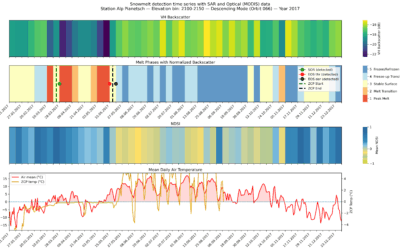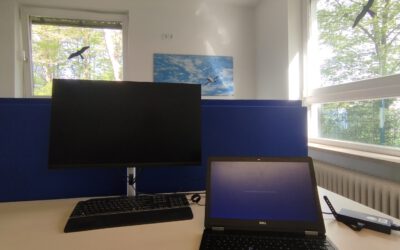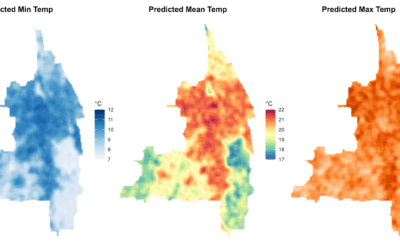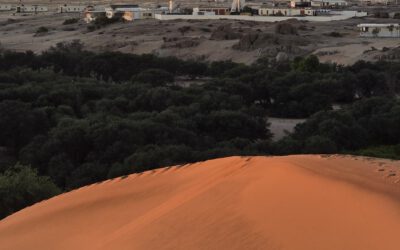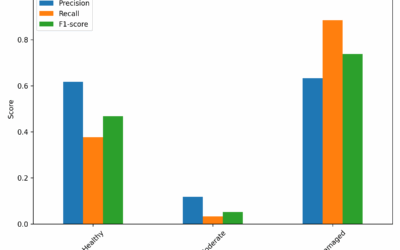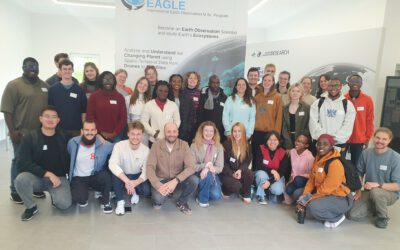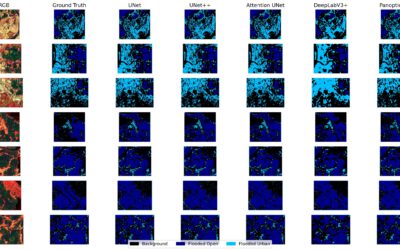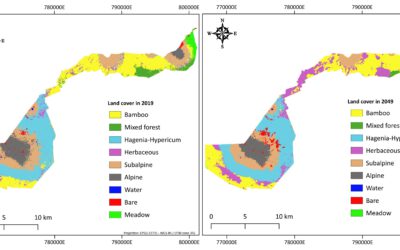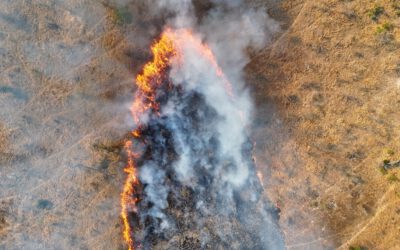Aim
In this module you will gain a detailed understanding of the advantages and challenges of Earth observation using Light Detection and Ranging (LiDAR) systems. Compared to other types of remote sensing data, the data from active Light Detection and Ranging (LiDAR) systems is of particular importance for local studies, where the 3D component (height) of objects is of relevance. Commonly LiDAR data is applied it in the field of digital terrain modelling, in forestry – e.g. for canopy height assessment, or urban structure applications. LiDAR embraces a range of active remote sensing systems mounted on different platforms, which provide valuable information for characterization of horizontal and vertical structure of the earth surface by measuring the travel time of laser pulses in visible and near-infrared spectral domains. The quality of scanning depends on the nature of the LIDAR system (discrete-return or full waveform) as well as on a set of other terrain- and data-driven factors. This course provides you with an overview on the theory and applications of LiDAR data, with a particular focus on airborne laser scanning. Following the initial theoretical sections on the principles and basic characteristics of LiDAR data, diverse practical steps and exercises will be implemented to provide real-world examples to illustrate how the LiDAR point clouds can be applied to extract information on terrain, surface and vegetation. These information will be further employed to model vegetation structural attributes on multiple spatial scales ranging from single trees to landscape levels.Content
Block 1: Introduction to LiDAR (how does laser scanning work?)- Reminder on general remote sensing issues: difference between active and passive sensing
- History of LiDAR measurements
- Basics of LiDAR data measurements (platforms, sensors)
- Airborne vs. spaceborne LiDAR: history, applications and data access
- Measurement of travel time of laser light (pulsed time of flight)
- On the concept of “structure”: why a third dimension is crucial?
- Platform navigation, orientation and positioning
- Difference between types of data acquisitions: discrete return and echo waveform
- The recorded parameters: elevation, height, signal intensity and co.
- The concept of „single-pulse“ vs. „multiple-pulse“
- How are the incoming returns recorded? first come- first served!
- Terrestrial LiDAR measurement: one position, rotating scanner
- Data formats and big data-management: each byte matters!
- General thoughts: why are the elevation models essential?
- Digital terrain models
- Digital surface models
- Normalized DSM (Canopy height models)
- Application fields: Forest, landscape and habitat representations
- Magnified focus on Forest (basic and derived parameters): Diameter at breast height, height, tree type proportions, tree type mapping, crown closure, stem count, growing stock und aboveground biomass
- Single tree measurements
- Urban: City models, roof top and building footprints
- Exercises on point cloud processing
- Import, export, visualizations and rendering
- Sample measurements, single tree measurements and associated tasks
- Elevation models
- Data trimming, cropping, smoothing and generalizing
- Catalog and descriptive communication
- Extraction of metrics for modeling purposes
- Thoughts on metrics
- Intensity: yes or no?
- Multi-scale metric extraction
- Multi-source metric extraction
- Class works and workshops (CIP-Pool/Homework)
- Literature review, discussion groups and public presentations
Coding
Software
Techniques
Content
General Course News and Updates
EAGLE MSc Defense: “Detecting Snow Phases and Runoff Using Sentinel-1 SAR and Multispectral–Optical Data”
On December 09, 2025, Daria Ushakova will present her Master Thesis on " Detecting Snow Phases and Runoff Using Sentinel-1 SAR and Multispectral–Optical Data " at 13:00 in seminar room 3, John-Skilton-Str. 4a. From the abstract: Snow is a crucial component of the...
EAGLE Internship Presentation “Detecting Wildfires in Brandenburg, Germany”
On November 18, 2025, Angie Torres will present her internship at " Detecting Wildfires in Brandenburg, Germany" at 12:00 in seminar room 3, John-Skilton-Str. 4a. From the abstract: Wildfires have become an increasing concern in Germany, particularly in the region of...
EAGLE MSc Defense “Modeling Urban Heat Exposure and Vulnerability Integrating Citizen Science and VHR Remote Sensing”
On October 22, 2025, Ariana Sofía Argüello Cordero will present her Master Thesis on " Modeling Urban Heat Exposure and Vulnerability Integrating Citizen Science and VHR Remote Sensing" at 10:15 at the EORC Meeting Room (1st floor), John-Skilton-Str. 4a From the...
EAGLE Internship Presentation “Gobabeb Namib Research Institute”
On October 21, 2025, Farimah Abdolzadeh will present her internship at " Gobabeb Namib Research Institute " at 12:30 in seminar room 3, John-Skilton-Str. 4a. Farimah has just completed her internship at the Gobabeb Namib Research Institute, located in the heart of...
EAGLE Innolab Presentation “Modeling Tree-Level Beech Leaf Loss in Bavaria Under Climate Stress with Multimodal Deep Learning Architectures”
On October 21, 2025, Henning Riecken will present his Innolab results on " Modeling Tree-Level Beech Leaf Loss in Bavaria Under Climate Stress with Multimodal Deep Learning Architectures " at 12:00 in seminar room 3, John-Skilton-Str. 4a. From the abstract: European...
Welcome to our new EAGLEs – Embarking on an Earth Observation Journey
As the autumn term begins and the leaves turn golden across Europe, we are pleased to welcome a fresh cohort of EAGLEs—our new MSc students in Earth Observation and Geoinformatics. This year’s group brings together curious minds from diverse academic and cultural...
New EAGLEs take off into the Winter Term 2025/26
As in previous years, the next generation of EAGLE Master's students from around the world gathered at the Earth Observation Research Center (EORC) on the first day of the winter term to begin their studies at the University of Würzburg. Prof. Dr. Tobias Ullmann...
EAGLE MSc Defense “Coastal Urban Flood Detection and Analysis Using SAR and CNN-Based Methods: A Case Study for Central Vietnam”
On September 23, 2025, Elly Schmid will present her Master Thesis on " Urban Flood Detection and Analysis Using SAR and CNN-Based Methods: A Case Study for Central Vietnam" at 12:00 in seminar room 3, John-Skilton-Str. 4a. From the abstract: With over half of the...
EAGLE MSc Defense “Utilizing deep learning and Earth Observation data to predict land cover changes in Volcanoes National Park, Rwanda”
On September 16, 2025, Jean de Dieu Tuyizere will present his Master Thesis on "Utilizing deep learning and Earth Observation data to predict land cover changes in Volcanoes National Park, Rwanda" at 12:00 in seminar room 3, John-Skilton-Str. 4a From the abstract:...
Mapping Fire from the Sky – Anna Bischof’s MSc Thesis on Savanna Fire Patterns
Wildfires are an essential ecological process in African savannas, shaping landscapes, influencing biodiversity, and playing a key role in nutrient cycling. Understanding their dynamics is crucial for both science and management – and this is where EAGLE MSc student...

